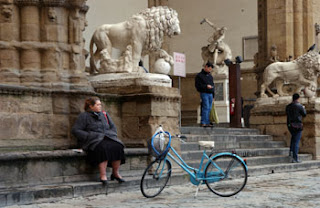Susan Brannon
Street Photography Lesson 1
Street Photography Lesson 1
To answer the question “What is street photography?” is quite simple yet complex. It is taking images in public places, like a part, an urban setting, a small town, conventions; public places that the photographer chooses to take images. However, the style of street photography is not written in stone, but rather an expression of the photographer taking images of something that appeals to him/her.
The photographer basically wanders the streets taking images of life and culture. The purpose depends on the photographer, some want honest recording of culture, others want to add a creative touch of something ironic, or may want to make use of shadows and light. The images may or may not have people in them. It is a style of photography that is independent without rules or regulations. However, I have rarely seen images that have been altered by photo shop.
Bryn Cambell, an accomplished “street photographer” describes his experience, “The equation is a simple one: streets = people. And it is people’s behaviour that most interests me: actions, reactions and interactions; emotions, body language, eccentricities, humour – and those rare moments of visual surrealism that can make one’s day.
My approach has not differed whether I have been on assignment as a photo-journalist or pursuing a personal project. The values for me are the same: a mix of humanism and aesthetics.”
Richard Kalvar describes it as, “I’m not crazy about the term “street photography” to describe what I do, because it’s not necessarily done on the street. The pictures can be taken on a farm, at the zoo, in an office, and so on. Let’s say we consider the general category of “unposed pictures of people” (or sometimes animals or even inanimate objects when they happen to be possessed by human souls), and then the subcategory “with nothing particularly important going on.” If we further narrow it down to the “play” sub-subcategory, we get into the domain I’ve worked in for forty years.”
Some photographers chose to work only in black and white, and some only in color, and some in both!
Below are three different examples of street photographs I took. I like to take expressive images that tell a story. Below each image is the title that I chose for the images.
Three types of transportation in a small space.
In different places.
An important conversation.
Shutter Speed Basics
Bracketing
Depth of Field
Focused Bracketing or Photo Stacking
Exposure
Related lessons:
What is the difference between Street Photography and Documentary?
Four Easy Steps to Learn panning
High Noon Photography Tips
Tips for Night Photography
Aperture and f/16 RuleFour Easy Steps to Learn panning
High Noon Photography Tips
Tips for Night Photography
Shutter Speed Basics
Bracketing
Depth of Field
Focused Bracketing or Photo Stacking
Exposure











